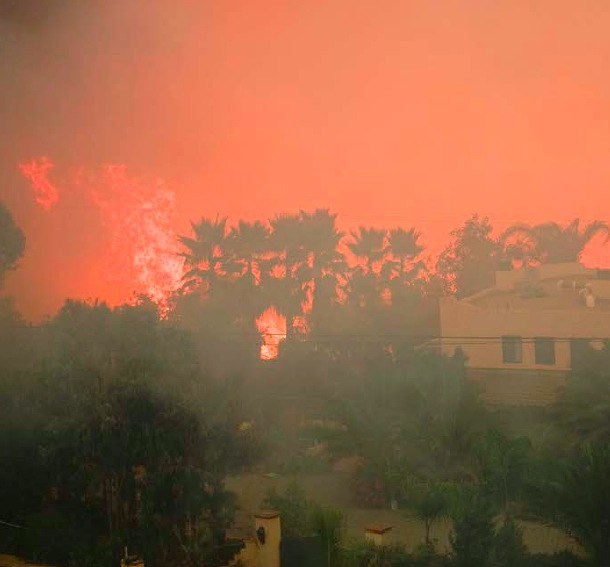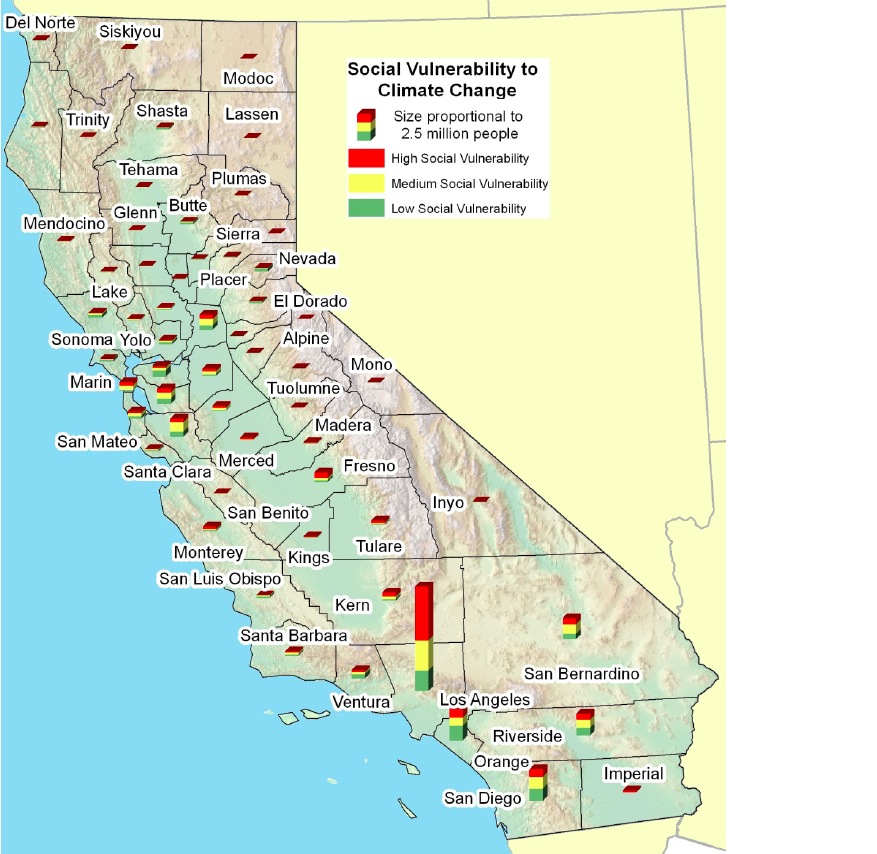CALIFORNIA NATURAL RESOURCES AGENCY
Executive Summary
 California and the world’s climate are changing, posing an escalated threat to health, well-being, nature, and property. Extreme weather, rising sea levels, shifting snowpack, among other impacts will touch every part of peoples’ lives in the next century. Planning key actions now will help us lessen impacts and cope with changes. Many aspects of the environment face historic displacement. In government at every level, we must work together to safeguard our state. And ultimately, each and every one of us needs to take steps to reduce our own impacts and increase our resilience in the future.
California and the world’s climate are changing, posing an escalated threat to health, well-being, nature, and property. Extreme weather, rising sea levels, shifting snowpack, among other impacts will touch every part of peoples’ lives in the next century. Planning key actions now will help us lessen impacts and cope with changes. Many aspects of the environment face historic displacement. In government at every level, we must work together to safeguard our state. And ultimately, each and every one of us needs to take steps to reduce our own impacts and increase our resilience in the future.
The Safeguarding California Plan provides policy guidance for state decision makers, and is part of continuing efforts to reduce impacts and prepare for climate risks. This plan, which updates the 2009 California Climate Adaptation Strategy, highlights climate risks in nine sectors in California, discusses progress to date, and makes realistic sector-specific recommendations.
California is a leader in the global effort to fight climate change. The state is pursuing a broad, integrated strategy to reduce greenhouse gas emissions and build the foundation for a new clean energy economy. While these efforts will reduce the magnitude and impact of climate change, they will not prevent it from occurring. Given the potential impacts and the long-term nature of effective planning, it is only prudent to begin preparing for these impacts. Actions needed to meet these challenges will not be cheap, but will cost far less than taking no action. Every step that we take today helps save valuable resources in the future. To that end, the plan details 11 current efforts already underway.
Right now, more extreme fires, storms, and heat waves are costing lives and property damage. State of the art modeling shows that a single extreme winter storm in California could cost on the order of $725 billion – with total direct property losses of nearly $400 billion and devastating impacts to California’s people, economy and natural resources. The health and fiscal consequences are dire. Climate change poses a threat not just to lives and health, but the financial resources of governments and the insurance industry.
More broadly – and likely more costly – are rising seas that threaten our coast, while disappearing snowpack in the Sierra Nevada presents new challenges for our state’s water management. In the near term, we must take practical, affordable steps to maintain our water, power, and transportation infrastructure, and plan for longer term actions as well.
Below are the nine broad areas impacted by climate change, with real-world, realistic recommendations for actions that we can take today to ensure a better future. In addition, we have included seven strategies that cut across each one of these nine broad areas that can be realistically implemented to help safeguard California.
Safeguarding our Everyday Lives from Climate Change:
- A Changing Water Future: Develop an urban water use plan that reduces reliance on distant, unpredictable sources.
- Keeping the Lights On: Promote development of smart grids that are connected, but localized.
- Cooling California: Promote strategies to keep Californians cool and guard against longer, more frequent heat weaves, which are already responsible for a growing number of hospitalizations and deaths.
- Do Better Today, Live Better Tomorrow: By reducing our carbon output today, we can lessen the extent of impacts in the future.
Safeguarding our Natural World:
- Nature Moves with the Climate: As climate patterns shift, so will nature. Providing habitat connectivity and chances for adaptation will help allow species and habitats to survive.
- Help Nature Protect Herself: Improve forest and other habitat resilience.
Safeguarding California – What Science and Lawmakers Can Do:
- Knowing the Real Impacts: Sound science will highlight risks, and help provide a path to solutions.
- Help is on the Way: Assess adequacy of emergency responders.
- Better Together: Collaborate with federal and local government.
Seven Strategies to Safeguard California: Cross Sector Themes
These nine areas touch every part of modern life for people and nature: 1) Agriculture, 2) Biodiversity and Habitat, 3) Emergency Management, 4) Energy, 5) Forestry, 6) Ocean and Coastal Ecosystems and Resources, 7) Public Health, 8) Transportation, and 9) Water. For these nine areas, common themes were identified during the development of the plan. This important identification resulted in identifying seven strategies that cut across all areas that can be acted upon.
- All core functions of government must make the risks Californians face from a changing climate an integral part of their activities.
- Provide risk reduction measures for California’s most vulnerable populations.
- Identify significant and sustainable funding sources for investments that reduce climate risks, human loss, and disaster spending.
- Support continued climate research and data tools to inform policy and risk reduction activities.
- Maximize returns on investments by prioritizing projects that produce multiple benefits and promote sustainable stewardship of California’s resources.
- Prioritize climate risk communication, education, and outreach efforts to build understanding among all Californians.
- Promote collaborative and iterative processes for crafting and refining climate risk management strategies.
Download full version (PDF): Safeguarding California
About the California Natural Resources Agency
resources.ca.gov
The California Natural Resources Agency’s mission is: “to restore, protect and manage the state’s natural, historical and cultural resources for current and future generations using creative approaches and solutions based on science, collaboration and respect for all the communities and interests involved.”
Tags: CA, California







 RSS Feed
RSS Feed